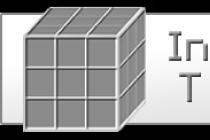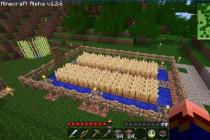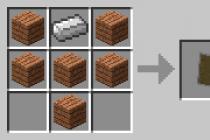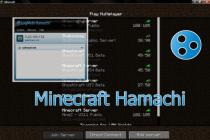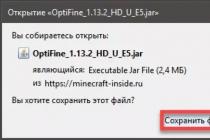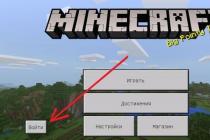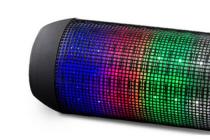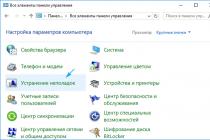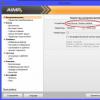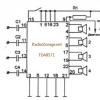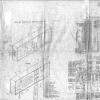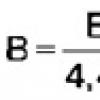Imagine a situation when your PC has lost its hard drive, and at this time you need to work in Windows. Go online, check your email or edit your work. How to get out of this situation, what to do and can the computer work without such an important component?
Today we will talk exactly about how to start a laptop or computer without a hard drive. The article contains several effective and fully working methods. They make it possible to work with any removable media, including a flash drive, run the required programs and connect to the Internet.
Burning a Live CD to Disc
In order to run the OS on a laptop or PC from a disk, we need a Live CD. This is an operating system that boots from removable media without installing it on a hard drive. To burn a Live CD, we need an OS image and Astroburn Lite.
Let's take a look at the detailed instructions:

That's all, it remains only to change some BIOS settings in order to start the computer without using a hard drive. How to do this, we will describe below.
Burning a Live CD to a flash drive
Let's look at another way to start a computer from a USB flash drive. To do this, you need to burn the LiveCD directly to a USB drive. However, there is one small problem - low speed, which is fully dependent on the USB bus. Of course, port 3.0 is the most attractive, but not all devices are equipped with it. Also, do not forget to check if the PC supports booting from removable media.

So, we need a drive with a capacity of 8 GB or more and a wonderful Rufus program that will do all the work for you. This is a small utility that allows you to create bootable USB flash drives as quickly and effortlessly as possible. Thanks to the easy and understandable interface, even an inexperienced user can use it.
The following instructions should be followed:

Recording time is affected by the size of the file being recorded and the bandwidth of the port.
Benefits of using LiveCD

Installing Windows on a USB drive
Also, to start a PC without a hard drive, you can use a regular USB flash drive. But for this you need to install Windows on it.
Let's take a closer look at how to do this:

Then we restart the PC and start Windows from removable media.
To ensure the fast speed of the system, after installation it is recommended to facilitate it, namely, remove unnecessary components, disable unnecessary services and try not to subject it to heavy loads.
Configuring BIOS to boot from removable media
After the OS is written, it is necessary to change the BIOS settings so that the PC boots first of all from the USB device, and only then everything else is loaded. All you need is to restart your computer and.

Now you know whether it is possible to use a computer without a hard drive, how to do it and with what programs. And you will be able to turn on your PC and use it for your own purposes, even in the event of a malfunction or lack of a hard drive.
Sometimes required install a portable operating system on a flash drive, which can be run on any computer, but is it possible? How to do it? First you need to understand for what needs and with what capabilities we need such operating system, then decide on the disk space, if Linux Slax fits such requirements, then we read the article further.
The advantages of such an operating system:
1) Work on any computer
2) Use as a live cd to restore windows
3) Access to files and folders even if windows is not running or not installed
4) Ability to use a computer without a hard drive
5) All the pluses cannot be listed ...
There are different ways to install an operating system on a USB flash drive, I will not talk about LinuxLive, installation on a shared flash drive in Linux ext4/ext3+swap format. I will only talk about an easy way and a special Linux Slax operating system for this.
Installing LinuxSlax on a flash drive.
1 installation step:
Go to slax.org/ru/download.php and select the distribution kit with the required localization in the "Download for USB" column in the .zip format. It is not recommended to build linux slax by yourself! You just need to download the assembled minimum Russian version, because. with compiled versions there is a risk of module incompatibility.
2 installation step:
We format the flash drive in FAT / FAT16 / FAT32 format (or-or) and copy the contents of the archive to our usb drive. Then, if you are with windows, then go to the boot folder on the flash drive and run the bootinst.bat file, press enter, if errors occur, then press continue all the time, then press enter again. Now our flash drive is bootable.
Running LinuxSlax from a flash drive.
1 Start step:
As soon as you press the power button, immediately nervously start pressing the F8 button on the keyboard, then select your flash drive using the arrows and Enter, usually it is the last one and contains the word USB, as well as the model name.
2 Launch step:
Select the system boot option, either Slax Graphics mode (KDE) for normal boot, or Slax Always Fresh without saving settings, or copy the distribution from the flash drive to RAM using the Slax Copy To RAM option to be able to remove the flash drive later.

Everything, we have an English-language empty system in front of us, now we will quietly turn it off and start the usual windows to follow the instructions further.
We improve and Russify Slax (Russification for older versions).
Now we need to translate our Linux into Russian, as well as supplement its capabilities and install applications using modules.
Go to slax.org/modules.php and download the necessary packages, for Russification, type Russia or Russian in the search and download the Russian package with UTF-8. Other modules can be downloaded if desired.
Can I run Windows 10 from a USB flash drive or external hard drive without installing it on my computer? You can: for example, in the Enterprise version in the control panel, you can find an item for creating a Windows To Go drive, which just makes such a flash drive. But you can get by with the usual Home or Professional version of Windows 10, which will be discussed in this guide.
In order to install Windows 10 on a USB flash drive and run from it, you will need the drive itself (at least 16 GB, in some of the methods described this turned out to be not enough and a 32 GB flash drive was required) and it is very desirable that it be a USB-enabled drive 3.0 connected to the appropriate port (I experimented with USB 2 and, frankly, got tired of waiting to write first and then start). To create an image downloaded from the official site is suitable.

Installing Windows 10 on a USB flash drive in WinToUSB Free
Of all the ways I tried to make a flash drive that you can run Windows 10 without installing, the fastest way was using the free version of the WinToUSB program. The resulting drive was operable and tested on two different computers (albeit only in Legacy mode, but judging by the folder structure, it should work with UEFI boot as well).
After starting the program, in the main window (on the left) you can choose from which source the drive will be created: it can be an ISO, WIM or ESD image, a CD with the system, or an already installed system on the hard drive.

In my case, I used an ISO image downloaded from the Microsoft website. To select an image, click the "Browse" button and specify its location. In the next window, WinToUSB will show what is contained on the image (check if everything is in order with it). We press "Next".
The next step is to choose a drive. If it is a flash drive, it will be automatically formatted (an external hard drive will not).
The last step is to specify the system partition and the bootloader partition on the USB drive. For a flash drive, this will be the same partition (and on an external hard drive, you can prepare separate ones). In addition, the installation type is also selected here: on a vhd or vhdx virtual hard disk (which is placed on a drive) or Legacy (not available for a flash drive). I used VHDX. Click next. If you see an "Not enough space" error message, increase the size of the virtual hard disk in the "Virtual hard disk drive" field.

The last step is to wait until the installation of Windows 10 on a USB flash drive is completed (it can take quite a long time). When finished, you can boot from it by setting it to boot from a USB flash drive or using the Boot Menu of your computer or laptop.

At the first start, the system is configured, the same options are selected as during a clean installation of the system, and a local user is created. In the future, if you connect a USB flash drive to run Windows 10 on another computer, only the devices are initialized.
In general, the system worked tolerably as a result: the Internet via Wi-Fi worked, the activation also worked (I used the trial Enterprise for 90 days), the speed via USB 2.0 left much to be desired (especially in the My Computer window when initializing connected drives).
Important note: By default, when you start Windows 10 from a flash drive, local hard drives and SSDs are not visible, they must be connected using Disk Management. Press Win + R, type diskmgmt.msc, in disk management, right-click on the disconnected drives and connect them if you need to use them.
You can download the WinToUSB Free program from the official page: http://www.easyuefi.com/wintousb/
Windows To Go flash drive in Rufus
Another simple and free program that allows you to easily make a bootable USB flash drive to run Windows 10 from it (you can also make an installation drive in the program) is Rufus, which I have written about more than once.

Making such a USB drive in Rufus is even easier:
As a result, we get the same drive as in the previous case, except that Windows 10 is installed simply on a USB flash drive, and not in a virtual disk file on it.
It works in the same way: in my test, the launch on two laptops was successful, although I had to wait during the device installation and configuration stages.
Using the command line to burn Live USB with Windows 10
There is also a way to make a flash drive from which you can run the OS without programs, using only command line tools and built-in utilities in Windows 10.

I note that in my experiments, a USB made in this way did not work, freezing at startup. From what I found, the reason could be that I have a “removable drive”, while for its performance it is required that the flash drive be defined as a fixed disk.
This method consists of preparation: download the image from Windows 10 and extract the file from it install.wim or install.esd(Install.wim files are present in the images downloaded from Microsoft Techbench) and the following steps (the wim file method will be used):
- diskpart
- list disk(we find out the disk number corresponding to the flash drive)
- select disk N(where N is the disk number from the previous step)
- clean(cleaning the disk, all data from the flash drive will be deleted)
- create partition primary
- format fs=ntfs quick
- active
- exit
- dism /Apply-Image /imagefile:path_to_install.wim /index:1 /ApplyDir:E:\(in this command, the last E is the letter of the flash drive. During the execution of the command, it may seem that it is frozen, it is not).
- bcdboot.exe E:\Windows /s E: /f all(here E is also the letter of the flash drive. The command installs the bootloader on it).
After that, you can close the command prompt and try to boot from the created drive with Windows 10. Instead of the DISM command, you can use the command imagex.exe /apply install.wim 1 E:\(where E is the letter of the flash drive, and Imagex.exe must first be downloaded as part of the Microsoft AIK). At the same time, according to observations, the Imagex option requires more time than using Dism.exe.
Additional ways
And a few more ways to burn a USB flash drive with which you can run Windows 10 without installing it on a computer, perhaps some of the readers will come in handy.
You can install a trial version of Windows 10 Enterprise in a virtual machine such as VirtualBox. Configure the connection of USB0 drives in it, and then start the creation of Windows To Go from the control panel in the official way. Limitation: the function works for a limited number of "certified" flash drives.

Aomei Partition Assistant Standard has a Windows To Go Creator feature that creates a bootable Windows flash drive in the same way as described for previous programs. Tested - works without problems in the free version.

There is a paid FlashBoot program, which, in addition to creating bootable USB flash drives, can also simply install Windows on a USB flash drive (To do this, after selecting the image, you will need to select "Install fully-functional Windows to USB Thumbdrive". At the same time, there is a separate such item specifically for UEFI downloads). The demo version has a limitation: the recorded drive will only work for 30 days.

I hope the article will be useful for some of the readers. Although, in my opinion, there are not so many practical benefits from such a flash drive. If you want to run an operating system without installing it on your computer, it's better to use something less cumbersome than Windows 10.
Sometimes it may be necessary to boot a computer with a damaged operating system in order to get files from the system disk and reinstall Windows. Most of the offered flash drives, unfortunately, do not work very adequately, for example, they fall into a blue screen, etc. This flash drive does not pretend to be a full-fledged operating system, but as practice has shown, Windows XP is loaded from it on almost any hardware that supports booting from USB devices.
In order for the disk to be visible, it must work in IDE mode, if you have AHCI mode in your BIOS, then you need to at least temporarily change it to IDE.
(42Mb) - A simple bootable flash drive with Windows XP. Allows you to pull files if your main system does not boot. It has a built-in GHost that allows you to make a disk backup or clone. There are problems with the launch of other programs and antiviruses ... But it is simple and very unpretentious to hardware, and besides, it has a microscopic size.
Due to the huge popularity of this article, I offer another flash drive.
or download in parts, - There are many differences. This flash drive contains a lot of utilities for restoring your computer. You can run your own programs, such as fresh antiviruses. It is also possible to install drivers for your equipment, configure network connections, edit the registry, restore information from a hard drive, utilities for cloning and backing up data, etc. Tested on computers from the Pentium 4 generation and above, as well as on a couple of netbooks. To run, you need 512MB of RAM and a flash drive of at least 1GB. Unpacking to a flash drive is completely the same as described below, only the image name has changed to mega_flash.gho. If possible, write in the comments about the results of use. If this flash drive does not boot, then the treatment recipe is described at the very end of the article.(Missing MBR Helper error)!
Actually, the archive contains an image of a flash drive and a Windows version of the GHost program.
So, we remove everything useful from a flash drive (512MB in size or more), because. it will be formatted to the NTFS file system when deploying an image to it and run the ghost32.exe file and click OK.
The interface is very ascetic, select Local -> Disk -> From Image. That is, we will expand the disk from the image.

By default, the same folder should open into which you unpacked the downloaded archive, you need to select the flash.gho file - this is the image of the flash drive.

Now the most important moment! Choose where to unpack this image. There are no drive letters here, there is only a size, and be guided by it so as not to accidentally ruin another drive!

Here in the New Size field you need to select the maximum size of the flash drive, if suddenly the number does not match the size of the flash drive, then write the size larger than your flash drive, then the number will automatically align to the size of your flash drive.

Everything, now when you click "Yes" unpacking will go.

If such an error suddenly appeared, it means that the flash drive is being used. Either you have some program open from it, or it can be used by a player like Winamp, for example. Click "Yes" and then the process will forcibly close everything that was connected with the flash drive.

The image is unpacked, click "Continue"

And press "Quit"

It remains only to boot from the created flash drive. The space on the flash drive is about 150MB, so you can leave it like that just in case. In addition, Norton GHost can be used to back up data, just like Acronis True Image. For example, to backup the system partition, select Local -> Partition -> To Image, and to unpack the image back to disk, respectively, Local -> Partition -> From Image.
If an error occurs when trying to load a mega flash drive (the one that is large), then . After unpacking the archive, run the file "grubinst_gui.exe" where it says DISK, select the disk corresponding to the size of your flash drive and click on the Install button. This will be written to it by the bootloader. Thanks to Deimos for looking into this issue. And then I already tried to unpack a lot of flash drives, but there were no errors anywhere, so that there was something to fix. Good luck everyone!
Our task for today is to create a special assembly of Windows 7 that would work without installation and run directly from a USB flash drive. By including the necessary software in it, we will be able to solve various problems: solve problems with disk partitions, remove viruses, or, for example, use hacker tools in a familiar environment.
Having realized for a long time that many problems are much easier to solve by booting from a Live media, I try to always have some kind of recovery distribution on my flash drive. Agree that this is, if not the best, then at least one of the most convenient ways to restore the system or, for example, deal with malware (especially when it comes to a blocker). I've tried a lot. First it was Linux based systems, then UBCD4Win built on Windows XP, and then I made my own build using Bart's PE Builder . Alas, the program has not been updated for a long time, which means that the list of supported systems available for transfer to bootable media remains the same: Windows 2000/XP/2003. This is a little disappointing: everyone has already gotten used to the "seven", and it would be great to build your boot system based on Windows 7. No sooner said than done.
Our assistant - WinBuilder
To replace PeBuilder, another absolutely wonderful tool was found - WinBuilder. This is not even a program, but a real framework for creating Windows PE (this is the name of the light version of Windows OS, which allows you to boot from a removable CD / DVD / USB drive). To do this, it extracts the necessary components from the distribution kit of the system itself, as well as the Windows Automated Installation Kit (WAIK) as the basis for the system and allows you to create additional scripts with which any third-party utilities are built into the system.
Several projects have been built on the basis of WinBuilder, here are just a few of them:
- LiveXP - Uses Windows XP as a file source and creates a system for administrators.
- Win7PE - takes the Windows 7 distribution as the basis for the system.
- VistaPE-CAPI - Creates an assembly based on Vista.
- NaughtyPE is based on Windows XP and supports media playback out of the box.
- MultiPE - builds a bootable system from a Vista or Windows 7 distribution.
We will use Win7PE, as the most proven and most suitable project for our tasks.
What do we need?
In order to assemble a bootable system based on Windows 7, we need the following:
- Windows 7 x86 or x64 distribution, preferably with SP1 already integrated.
Driverpacks are cool driver packs that support a huge amount of hardware. Builds for various types of devices are available on the site, we will not need much, namely, collections for the Chipset, LAN, WLAN Mass Storage driver categories.
Preliminary preparations
When all the files are at our disposal, we can start preparing.
- First of all, we need to install the Windows Automated Installation Kit for Windows 7. Of course, it is not necessary to burn the ISO file to the disc: you can simply unpack the files from KB3AIK_EN.iso and run StartCD.exe. In the autorun menu that appears, select Windows AIK Setup and perform the most standard installation. This economy weighs a lot, but after the WinBuilder scripts extract the necessary files from there, WAIK can be deleted (keep this in mind).
Installing WAIK
- Next, copy the Windows 7 files from a disk or from an ISO image to some directory.
We place the downloaded WinBuilder.exe in some folder (for example, C: WinBuilder) - just not in the directory with the user profile. And we run the binary under the administrator account: otherwise the program will honestly warn you about possible problems.
WinBuilder is of little use in its pure form - it needs scripts and auxiliary files to create a bootable distribution. Therefore, the first thing you will see after launch is the "Download Center". The program will prompt you to select the projects that you want to download.
We tick off:
- updates.boot-land.net (these are updates);
- win7pe.WinBuilder.net/SE (Win7PE project files).
In the upper left corner, you can select the download mode (by default it is set to "Recommended"). Select through the menu "Complete" and start downloading files by clicking on the "Download" button.
- For some reason, WinBuilder cannot correctly extract absolutely all the files needed to create the assembly, so you have to work a little by hand. You need to find the bcdedit.exe file on your system (Windows 7) and copy it to C:WinBuilder ProjectsToolsWin7PE_SEx86 (or C:WinBuilder ProjectsToolsWin7PE_SEx64 for 64-bit system). There you need to copy the following files:
imagex.exe
wimgapi.dll
wimmount.inf
wimmount.sys
wimserver.exe
Initially, they are in the WAIK folder. You can try not to complete this step. My automatic WinBuilder scripts couldn't rob these files, but maybe you'll have better luck.
We collect the distribution
Now that we have everything we need to build and are ready to use, there is no point in delaying the creation of the distribution. Again, I'll break it all down.
- So, in the left panel we see the Win7PE SE project tree. But we press the "Source" button: here you need to specify the location of the Windows 7 distribution files. Everything else can be left by default.
Next, you need to connect the drivers that the system will use to the assembly creation. This is done in the "Drivers" section. The default path is %GlobalTemplates%Drivers_x86. The easiest way is to click on the "Explore" button and copy all the necessary drivers into the folder that appears. We just unpack here the Driverpack archives that we previously downloaded. Since scanning of subdirectories is supported, it is not necessary to shove everything into one crazy pile: feel free to place the contents of the archives "as is".
If you go through the "Tweaks" section, you can additionally make various cosmetic settings for the future system. For example, change the wallpaper, customize the Start menu, change shortcuts. Everything is very clearly configured through the appropriate options.
Now you can click on the "Play" button and trust that everything will go smoothly. Creating an assembly obviously takes some time: in the process, you can watch how one system script after another is executed (it's hard to imagine how much time it would take to do such work manually). Accordingly, the more scripts you choose to execute, the longer WinBuilder will mess around. In case of an error, the program will report what the problem is and, most likely, will issue help in the browser with a possible solution to the problem.
I am compiling this instruction taking into account all the difficulties that have arisen for me, so you should not step on my rake. Everything should be fine, and as a result you will get the Win7PE_x86.ISO file in the WinBuilderISO folder.
- Before uploading files to a USB flash drive, you can first check the performance of the assembly in a virtual machine, and here, again, everything is automated. In the VirtualTest section, you can select a virtualization system (the test can be arranged using qEmu, VirtualBox, Virtual PC, VMware). I left the default mode (Best Emulation) and WinBuilder ran the resulting image in the installed VMWare Workstation, which suited me just fine. You can choose a more suitable scenario. You can leave everything as it is and install a free and lightweight system into the system.
Checking the build under VMware
- Now about how the transfer of the system to a USB flash drive looks like. First, WinBuilder launches the HP USB Disk Storage Format Tool, the most correct utility for formatting USB drives. Here we select FAT32 (if you want to add the ability to boot from a USB flash drive of another system in the future) or NTFS. Formatting. After that, the Grub4Dos utility comes into play, which has an important purpose - to install a bootloader on a USB flash drive. Here it is necessary: firstly, to select the disk correctly (since the letters are not displayed, look carefully at the size), secondly, select "Part List - Whole disk (MBR)" as the value of the parameter and check the Don't search option floppy. After that, it remains to click on the "Install" button, instantly receive a message about the installation of the bootloader and, mentally thanking Gbur4Dos, close its window. All: After that, WinBuilder will promptly transfer all files to the USB drive.
Our bootable USB flash drive with Windows 7 is ready.
It’s already a sin not to boot from a USB drive to make sure that the system works not only in a virtual environment, but also in a real, very ordinary environment. But I want to warn you right away: this is a heavily stripped-down variation of Windows 7, in which a minimum of components is left. No Aero and beautiful effects for you: all this is disabled. And from the software, by default, you get some standard Windows utilities (like regedit), as well as several bonus programs like PENetwork for setting up a network (including a wireless adapter) and Opera USB for browsing. All this is not bad, but obviously not enough - the system needs to be equipped.
Network configuration
Scripts (plugins)
Additional programs that can be included in your system assembly are distributed in the form of scripts (or plug-ins, as they are also called). Connecting them is easy. It is enough to copy them to WinBuilderProjectsWin7PE_SEApps and then activate them via the WinBuider GUI. True, in order for them to appear in the script tree, the program has to be restarted, although I do not rule out that updating the list of plugins can be somehow easier. In some cases, the plugin is distributed as a single script file. There are two options here. The developer could include the necessary files directly in this file by base64 encoding them. Or, no files are included in the script, and you need to copy them to the folder with the script yourself (this should be described in detail in the plugin manual). The latter especially applies to commercial software (the same Total Commander), whose files plugin developers simply do not have the right to distribute.
Now I'm answering the question you probably have: "Where can I get these plug-ins?". There are many sources - for example, from here:
For example, you can download the Wireshark plugin and the Winpcap required for its operation (available from here). We move it to the Apps / Network directory, activate it through the tree - and we get an assembly with a full-fledged sniffer. Below are links to some useful plugins:
Despite the fact that there are quite a lot of ready-made plugins, it is useful to be able to write a script yourself to add the necessary programs to the system. When adding a new script via "Tools .. Create script...", WinBuilder offers a simple script template. For example, I will give a simple script that installs Softperfect Netscan and explain the logic with the help of comments:
//Section with information about the added application
Title=NetScan
Description=Netscan from Softperfect
Selected=True
Level=5
version=1
NoWarning=False
Download_Level=0
//Important variables, including the path to the executable file
%ProgramTitle%=Netscan
%ProgramEXE%=netscan.exe
%ProgramFolder%=netscan
// Commands for installing the application
// Copy the necessary files from the netscan subdirectory in the folder where the script is located (here you must first transfer what is necessary for the program to work)
CopyProgram,%ScriptDir%%ProgramFolder%
//Add labels
Add_Shortcut,StartMenu,Netscan
Add_Shortcut,Desktop,Netscan
//We specify the DLLs that are necessary for the program to work.
WinBuilder will include them in the build
Require_FileQ,mgmtapi.dll
Require_FileQ,msvcrt.dll
Require_FileQ,KERNEL32.dll
Require_FileQ,snmpapi.dll
Require_FileQ,USER32.dll
Require_FileQ,WS2_32.dll
Require_FileQ,wsnmp32.dll
A huge number of scripts are available on the reboot.pro forum, they can be viewed as examples and used as a basis. In any case, there is nothing complicated in creating your own scripts. If there is a need to simply add some files to the assembly, then it is not necessary to create a plugin for this. In this situation, the section "Components .. Additional Files" will help, which is necessary just for such a situation. If you click on the "Directory Example" button, then you will see the folder structure used in the assembly, so you can understand exactly where the files will be added.
What did we get?
How well does such a system work? Very good! When loaded on my laptop, the necessary drivers immediately cling, including for the wireless module. Thus, I immediately have access to the Web. All programs, if properly integrated (that is, by fulfilling all their dependencies), run and work with a bang. And this is software for system recovery, working with partition tables, backup, editing the registry, as well as hack tools. After all, what could be more convenient as an auxiliary system that you can always take with you and, if necessary, boot from it?
- As I already mentioned, it is better to take a Windows 7 image with SP1 already included as a source distribution. Using a distribution that does not yet have a service pack, there were problems finding some libraries. Although, I will make a reservation, this is not critical, because WinBuilder gives specific ways to solve the problem.
- In case of any problems, scripts, as a rule, give errors. If something went wrong, but what exactly is the problem is not clear, the logs will help. The option is activated in the "Finalize .. Save log file" script and is enabled by default. WinBuilder writes logs in great detail: you can fully study the process of creating an assembly, follow the logic of script execution and, in case of a problem, try to eliminate errors.
- An optional but very useful project is www.paraglidernc.com/WinBuilder (I recommend that you immediately select it for download during the first run of WinBuilder). It includes detailed instructions for creating scripts. After installation, look for it in the ProjectsParagliderWinBuilder.chm folder.
- The easiest way to include an application in the assembly is to find its Portable version (for example, on the portableapps.com website), which already includes all the necessary files to work on a "foreign" system.

